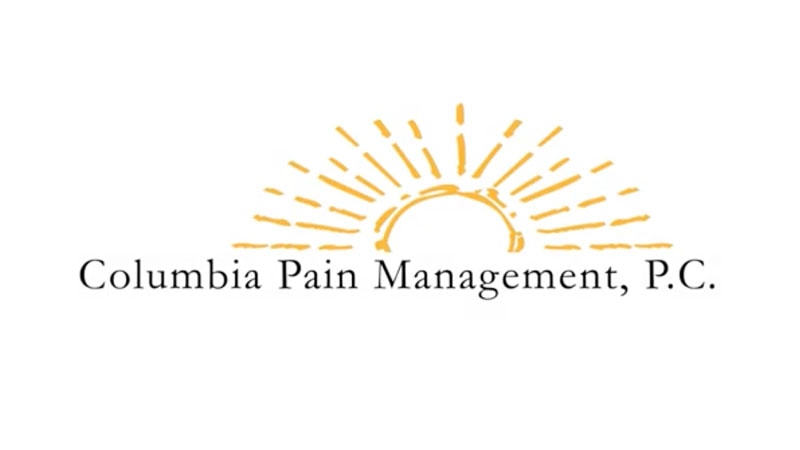Pain Medication Alternatives
Opioid Therapy Statement
The physicians at Columbia Pain Management, PC are here to change your life by reducing your pain and improving your daily functioning. We do this with safe and effective comprehensive treatment plans that reduce risks and maximize benefits.
We go to great lengths to protect our patients from the significant risks that are associated with opioid therapy which are also known as narcotic medications. We stringently follow DEA and other professional society recommendations regarding prescribing opioid medications. Further, we only prescribe opioid medications if we determine that a patient’s pathology warrants their use, the patient satisfies specific criteria, the patient has failed other lower risk treatment options, and that there is a reasonable expectation for prolonged functional improvement.
We typically do not prescribe high doses of opioid medications as research continues to show that this regimen has much greater risks for patients with few long-term benefits as compared to lower doses. We believe that if you suffer from pain, we can help you. We successfully treat all types of pain with our comprehensive treatment plans. Our treatments are safe, minimally invasive, and clinically proven to be highly effective.
Long-term Effectiveness of Opioids for Chronic Pain
Opioids offer an appropriate and safe treatment for some but not all patients with non-malignant chronic pain. Patients on opioid therapy for chronic pain require close monitoring and surveillance to assess for functional benefits and minimization of harm. Most patients who trial opioid medications for long-term pain discontinue them due to lack of efficacy or side effects. No treatment should be continued without benefit.
More evidence is available on harms of long-term opioid therapy than benefits. Controlled observational studies suggest that, compared with no opioid use, opioid therapy for chronic pain is associated with increased risk for overdose, opioid abuse and dependence, fractures, myocardial infarction, and use of medications to treat sexual dysfunction. Some forms of opioid medications may be safer to use than others in certain circumstances. The use of opioid medications in combination with other sedating or centrally-acting drugs is considered dangerous and potentially life-threatening.
Naloxone for Overdose Reversal
Naloxone is an opioid overdose reversal medication, available either as a nasal spray or an injector. An opioid overdose occurs when opioids have fully blocked the brain’s opioid receptors, causing a person’s breathing to slow down and ultimately stop. Naloxone works by knocking the opioids out of the receptors in the brain where they are having their effect and preventing them from returning. When enough naloxone is administered, breathing will return to normal, saving an individual from the brink of death.
This video will explain what naloxone is and how to administer it for the reversal of suspected opioid overdoses.
What do I do if I suspect an overdose?
1. Call 911
If you suspect an overdose and your child is unresponsive, call 911. To check if your loved one is unresponsive, first, try getting their attention by calling their name or saying phrases that might alarm them, such as “I’m going to call the police.” If that doesn’t elicit a response, then try rubbing their chest firmly with your knuckles to wake them.
If they remain unresponsive, and you must leave them alone to make the call, it’s important to put them in the recovery position – on their side with legs bent and head resting on the arm on the floor (see image below). This is to avoid aspiration if they vomit. Give the address or location and as much information as you can (e.g., unconscious, not breathing, drugs used if known, etc.).
2. Administer naloxone
Naloxone is only effective in the case of an opioid overdose. However, if you are unsure of the substance(s) involved, it’s best to err on the side of caution and administer it. Naloxone is not known to cause any harm in the case of a non-opioid overdose.
3. Conduct rescue breathing
If they have labored breathing or are not breathing at all, it is vital to conduct rescue breathing. Tilt the head back, pinch the nose closed and give one slow breath every 5 seconds until they resume breathing on their own or until the paramedics arrive. Watch to see that their chest rises and falls with each breath.
4. Comfort and support
Once they are breathing on their own, place them in the recovery position until paramedics arrive. Comfort them as they may be confused, upset and going through withdrawal (feeling sick from a lack of opioids if their body is dependent on them) when revived. Do not allow them to use drugs.
5. Aftermath of an overdose
Once your loved one has been stabilized, this may be an opportunity to suggest detox and treatment. Visit a doctor and ask about referrals for substance use disorder treatment.
Understanding the Safe Use of Opioids for Chronic Pain
CPM stays abreast of guidance from scientific societies and workgroups regarding the safe management of opioid pain medications. Opioids are prescribed for the long-term management of pain when other modalities have not been effective, it is judged that the medical benefits outweigh the risks, and patients agree to the principle of safe opioid stewardship. Patients are expected to adhere to specific evidence-based behaviors and actions that have been shown to reduce the likelihood of complications related to this therapy. This includes using the medications as directed by the prescriber, not escalating doses nor frequency of use, abstaining from the use of sedatives or illicit substances, designating a primary pharmacy medication dispensing, and not seeking opioid medications from other practitioners. Other affirmative actions expected from our patients are summarized in the video below:


